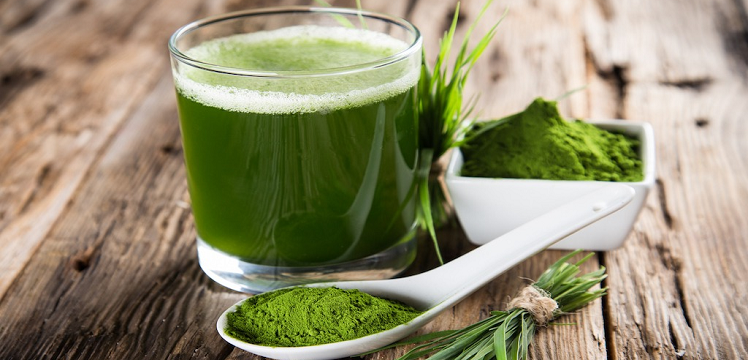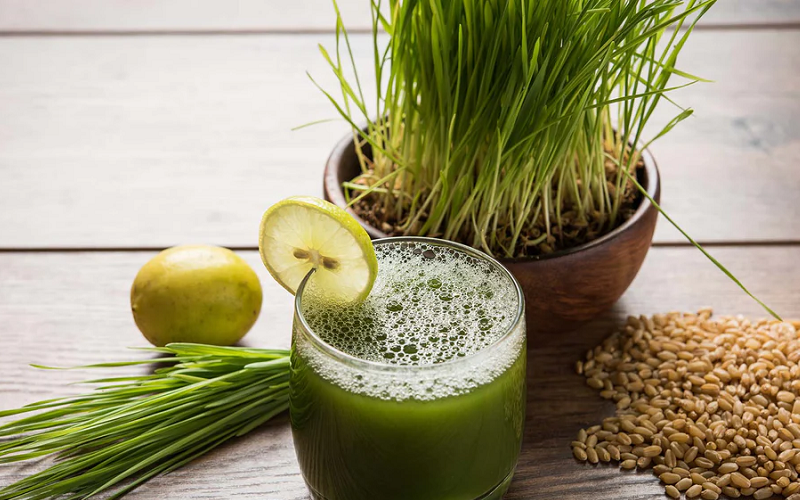Most people have heard of barley as a grain used as an ingredient in some breads and beers. But before a barley plant arrives at the grain phase it’s a grass that health-minded people use in smoothies or shakes. The reason for this is simple: barley grass is so loaded with nutrients that it’s called a superfood, or supergreen.
Health Benefits of Barley Grass
Barley grain has always been known as a very nutritious type of plant, but it’s during the grass point where this plant offers an astonishing variety of nutrients. The barley grass is rich in the B vitamins, in addition to vitamins C, A, and E. The grass also includes antioxidants, zinc, copper, potassium, and amino acids. So it’s no wonder that barley grass provides a number of health benefits.
Strengthens the Immune System
Your immune system is the body’s protection system to combat bacteria, viruses, and other toxic invaders. This grass is rich in vitamin C — it has several times the level of this vitamin than oranges. Vitamin C as all of us know is essential to good immune system health. This grass also provides selenium and zinc, micronutrients crucial for blood cell production and the removing of built up toxins.

Barley Grass Provides Protection From UV Radiation
UV, or ultraviolet, radiation is the harmful radiation emitted from the sun. While just a little UV radiation is healthy for people, excessive exposure prematurely ages the skin. UV radiation is the main source of the skin cancer melanoma. This grass is a very good source of the previously mentioned superoxide dismutase — the powerful antioxidant enzyme with qualities that guard cells from the harmful side effects of UV radiation.
Enhances Digestive Health
Barley grass has a substantial HCl, or organic sodium, content. HCl is a necessary element in the stomach’s manufacturing of the food-digesting chemical hydrochloric acid. Insufficient HCl results in toxin buildup and leaves indigestible food material. As it is a green plant, barley grass has a very high chlorophyll content. Chlorophyll is a natural cleaner that deals with the negative repercussions of eating refined foods. This green grass is a good quality source of fiber that can help strengthen gut health by providing food to the health-providing bacteria that always lives in your gut. This helps in digestive function and keeps the intestines healthy.
Slows Aging
Saponarin is a remarkably powerful antioxidant. Saponarin is found only inside of barley grass. Antioxidants neutralize the harmful effects of cell-harming free radicals — the unstable molecules that arise from processed foods, alcohol, and toxins that affect the DNA in cells. Free radical add to the causes of aging. Along with saponarin, SOD (superoxide dismutase) — the barley grass antioxidant that gives a good defense from UV (ultraviolet) radiation — is a vital free radical killer that is important to slowing down the aging progression.
Barley Grass Protects Against Osteoporosis
Osteoporosis is a condition that hinders the creation of bone growth, leading to a reduction in bone thickness and strength. Barley grass includes phosphorus and copper, which are both necessary for proper bone development. Even more importantly, this green grass is extremely high in bone-building calcium. In fact, this green grass contains more than seven times the level of calcium as found in milk!
Using Barley Grass Supplements
Barley grass does not make for a tasty meal — what grass is? So nutritionally-minded people generally buy it as a nutritional supplement.
People purchase barley grass nutritional supplements as tablets, powder, or capsules. Barley grass powder is normally the favored approach to take the barley supplement because it’s quick and easy to measure the specific quantity you require. The barley grass may be stirred in water, but for a tastier drink, it’s preferable to blend the powder in a juice or flavored drink of your choice.
How much barley grass you want to use per dose is entirely you. A typical dose of an about two grams (2000 mg) is very common, however many people like as low as half a gram (500 mg) up to seven grams (7000 mg) or more. Side effects of barley grass are almost unheard of (it is only a type of grass, after all), so there should not be a fear of getting too much. As is true with any nutritional supplement that’s being introduced to your body, it does make good sense to start at a reduced dose and work your way to a higher level over a week or two.

